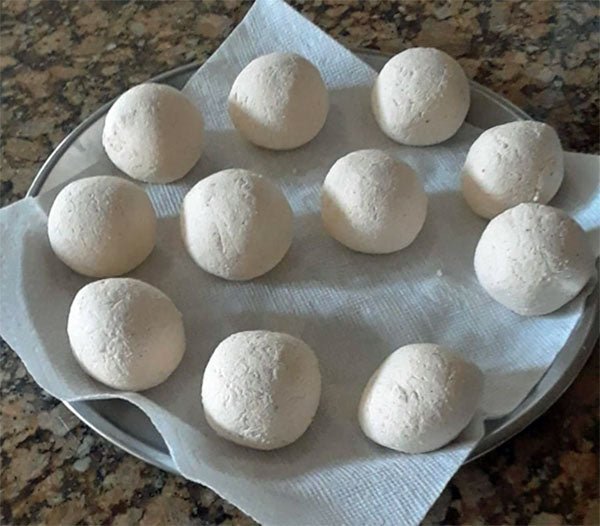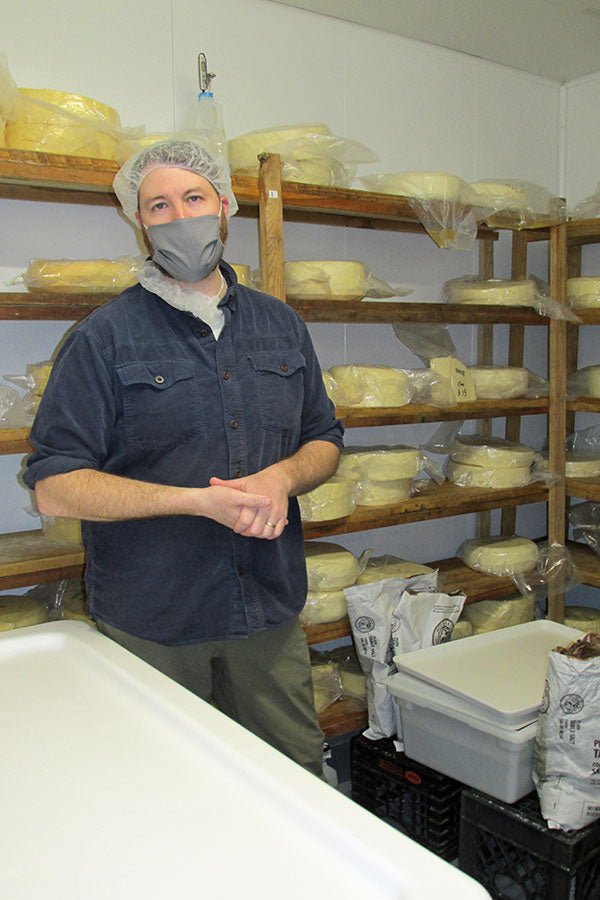
Cindy at her #3 daughter’s graduation from the University of Texas at San Antonio (with a master’s degree in Biomedical Engineering). Her husband is on her right. This was in May.
We started this interview with Cindy 7 months ago, but she had so many calamities happen in that time period, we weren’t able to make any headway on it. It was a seriously bad year for her, her husband and her cows. Even her cheese was cursed with flies.
Fortunately, things have settled down and everyone is healthy now. And, after everything, Cindy emerged stronger and wiser. She managed to finish this interview and she came up with a lot of good advice for beginners.
We always say that cheese makers are the most interesting people in the world but we should also say that they are probably the most resilient!
Cindy’s Story
I live in Seguin, Texas. The military moved us here 27.5 years ago. My husband retired from the Air Force in 2001. Now, he works as a civilian at Fort Sam. We had 4 children.
I’ve always loved cheese, since I was a small child. I also always loved cows, and wanted to have them.
I’ve also been a self sufficiency sort of person my whole life. I look at things and think “I can do that!” and set out to figure it out. Cheese making is my latest, in a very long line of do-it-yourself adventures I’ve undertaken throughout my life – making wine & beer, canning, preserving, dehydrating, sewing and making soap.

Wine. Back left: Spiced Mustang Grape (a German warm wine knock off); Back right: Black Spanish Grape (Original plants from Dry Comel Creek Vineyard bought in 2014); Front left to right: Pomegranate, Fig, Mesquite Bean, Acorn wines. All harvested from my property.

Assorted soaps and one lotion bar. The 3 darker ones are made with cow’s milk and calendula flower. The lotion bar is to get rid of mosquitoes. I also make creams and lip balms.
I graduated from pharmacy school in 2009 with my PharmD at the age of 50. The pharmacy bubble burst shortly after I graduated, and I was only able to get part time and contract work until 2016.
At that time, I found myself out of a job, so I bought some dairy cows to keep on my 18 acres.
Right now, I’m only keeping the milk from one of my cows, Penny. She gives me 3-4 gallons of very rich, high cream content milk a day.
I make cheese, yogurt, butter, ice cream and frozen yogurt. I’m not a Class A dairy, so I can’t legally sell it.
A family down the road has 12 children, and they help me with my cows, so I give them at least 6 gallons a week. Penny gives me 4 gallons/day.

MooLatte and her calf in June. This will be her last calf. She’s had too many health issues, so I will retire her. I could never eat her. She’s too much of a pet. I’ve given her too many antibiotics to ever drink her milk again.
When the milk is 1 week old, I make your Y5 yogurt and give some of it to the cows. It has probiotics to help their rumen break down carbohydrates better.
When I first started making cheese, nothing worked. I was entirely self-taught. Then, I found your website (cheesemaking.com) and started over with beginner cheeses.
I started out making soft and washed rind cheeses. My favorite was Brie. I was making about 6 lbs a week back in 2019, when I got attacked with cheese flies. They got into everything, even after fumigating the house, my cheese fridge, etc. I ended up throwing away over 50 lbs of cheese.
At that time, I switched to hard cheeses that I could vacuum seal to age. While I probably don’t get authentic cheese tastes, due to beneficial, ambient, yeasts and molds, the aging is much more predictable with less work.
Using this method, I was able to make Parmesan style cheese from your recipe and it is still aging after 1 year.
Last year, I was alternating every week between your brick cheese in wheels and your Asiago, both because they were super quick and easy, relatively speaking.
During the height of the pandemic, I was making at least 4 lbs of cheese a day from March, 2020 till June, 2020. My criteria was to examine your recipes and choose at least one new and more difficult cheese to try every day.
Most of my cheeses don’t taste like the originals, I’m sure, although I rarely get the chance to taste what the real deal tastes like. When I go to San Antonio, I try to go to HEB Central Market and pick up some of their interesting cheeses, then see if I can come close when I make them.
My husband made me 2 cheese presses. My favorite mold is your large hard cheese mold.

As you can see, it is sitting in a steam drainer that fits the pot, so it catches all the whey. I also use a silicon pot cover over the follower to protect the cheese from the old aluminum coffee pot that fits perfectly inside.
This past year has been hard – we had a bad spell of mastitis caused by some homeless people sneaking over our fence at night and milking our cows with dirty hands. It took me 6 months to clear that up. I was throwing a lot of milk away while treating those cows.
My 3 acre parcel backs up to a 100 acre thick, overgrown, mesquite forest. You never know what’s hiding back there. We never had trouble until now!
Advice for beginners:
Never give up. There are no mistakes really, especially if you have a pet. If you don’t like it, your dog or chickens will love it!
It may not look like it turned out, but press it anyway, and then let it age a couple of weeks to months and see what happens. You may have made a new creation.
In the over 100 batches of cheese I’ve made, besides the ones ruined by cheese flies, I’ve only thrown out 1 that the dog didn’t like and 1 that I didn’t like. The chickens (and turkey) did eat it – they eat anything!

This is Junior. I raised him from an egg. He thinks he’s human. If the door gets left open he comes inside looking for me gobbling. No, he wasn’t Thanksgiving dinner!
Also, ask around, there are people that like really sharp cheese, even if you don’t, they might, so you can make a gift.
Educate yourself on safety to make sure you aren’t growing any nasties. When you age a cheese longer than 60 days, it kills off the pathogenic bacteria. When a cheese education class comes online, take it. Even if you’ve done it before. Refresh your skills often.
In cheese making, cleanliness is next to Godliness, as the old saying goes. Don’t take shortcuts in your cleaning steps. You can even go as far as learning to make your own auger (to check bacteria count) and doing swabs and incubating to double check your environment. Not necessary, but fascinating!
Start with very easy recipes first. If you try to start with the harder ones, they won’t turn out the way you expect and you’ll get disappointed and frustrated. Go to cheesemaking.com‘s recipe section. Start with the easy recipes.
Make a big binder. Print out the recipes you want to try with the pictures. Get some reinforced lined binder paper. Every time you make a new recipe, write the recipe down with any changes you make and the date. Write down each step and every mistake. This will be like you are back in science class.
It’s a working book. Even write your mistakes, because they may turn out to be a good thing. I put each new recipe in the front and I flag them until they are done aging. When I finally open them, I write notes on the day I opened it, and what I liked and didn’t like.
I make good use of cheesemaking.com‘s free recipes with detailed instructions in deciding which cheeses to try. Stick to the easy ones at first until you get some skills behind you. Then add new ones weekly or monthly depending how often you are making cheese. Try to be adventurous. Read the histories and descriptions of the cheeses. I know I’ll never be able to travel to those places, but the writers are so good, they can bring you right along with them.
Never be afraid to try new flavors. There is more to life than just mozzarella, cheddar, Jack, Swiss and Colby.
If you live in a hot area of the country, order your cultures for the year during the Black Friday sale. You don’t want them sitting in the sun in the summer.
Don’t worry about having a bunch of fancy equipment. You will be surprised by what you have that will work as a substitute until you can get the more traditional items you need and want.
Improvise!





























































































































































